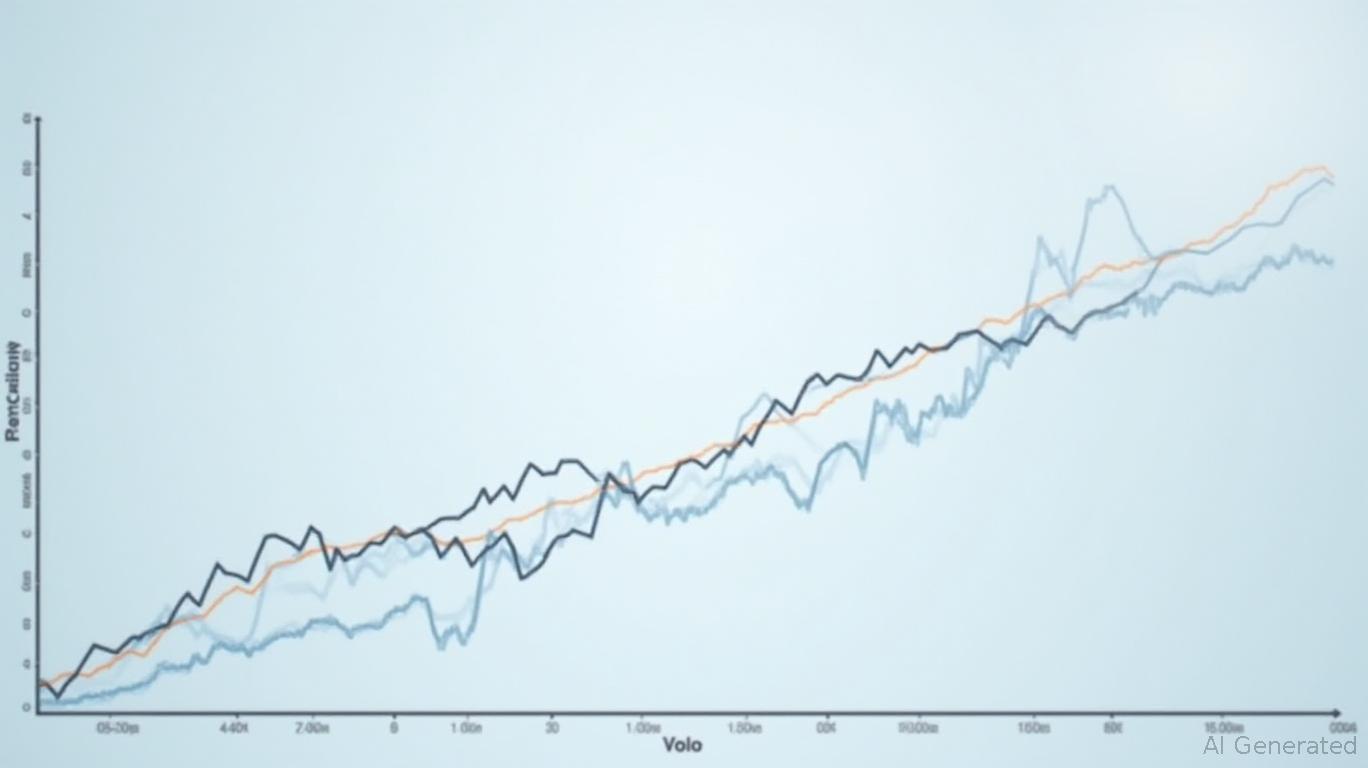AInvest Newsletter
Daily stocks & crypto headlines, free to your inbox
The global economy faces headwinds from persistent inflation, uneven monetary policy normalization, and geopolitical frictions. In this environment, investors seek institutions capable of sustaining profitability through cyclical turbulence. Danske Bank (CSE:DANSKE) emerges as a compelling Nordic play, leveraging its capital strength, fee-based growth, and sustainability-driven strategy to navigate these challenges. Q1 2025 results underscore its defensive qualities, positioning it as a stable investment in uncertain times.
Danske's Q1 2025 performance highlights its ability to insulate earnings from macroeconomic pressures. While net interest income dipped 4% year-on-year due to lower rates and the divestment of Norway's personal banking business, net fee income surged 8%, driven by strong demand for cash management and everyday banking services. This diversification is critical: fee income now accounts for 38% of total revenue, up from 35% in 2024, reducing reliance on net interest margins.

Cost discipline further bolsters its resilience. Operating expenses remained flat at DKK 6.3 billion, enabling a slight improvement in the cost-to-income ratio to 45.2%. Combined with lower loan impairments (now DKK 50 million vs. DKK 101 million in Q1 2024), this supports a stable ROE of 13.3%, up from 12.9% a year earlier. Meanwhile, the CET1 ratio held at 18.4%, well above the 13% regulatory minimum, providing a buffer against shocks.
Danske's defensive moat extends beyond financial metrics. Its Forward '28 sustainability strategy transforms ESG goals into operational resilience. Three pillars guide this effort:
Its 2025 Transition Financing Policy shifts focus from project-specific green bonds to entity-level assessments, evaluating companies' transition credibility. This ensures support for sectors like shipping and steel while maintaining financed emissions targets.
Risk Mitigation Through Data and Governance:
A 40% under-represented gender target in leadership by 2028 enhances governance diversity.
Customer-Centric Sustainability:
The Climate Progress Report 2024 showed progress: green financing grew 15%, and partnerships with firms like Position Green expanded ESG offerings. This framework not only aligns with Nordic regulatory expectations but also positions Danske as a preferred partner for clients transitioning to low-carbon economies.
In an era of rate cuts and credit tightening, Danske's metrics stand out. Its CET1 ratio and ROE outperform regional peers, while its 2025 net profit guidance (DKK 21-23 billion) remains intact despite macro headwinds. The bank's decision to exit Norway's retail banking reduced complexity, focusing resources on its core Danish market, where lending and deposit growth remain robust.
The Forward '28 framework's climate risk mitigation also insulates it from stranded asset risks. By engaging sectors like shipping and steel, Danske avoids exposure to companies lagging in transition plans. This proactive stance aligns with institutional investor demand for banks that embed sustainability into core strategy.
Danske's valuation appears attractively defensive. At 9.5x 2025E P/B (vs. a 5-year average of 11.2x), its shares trade at a discount to peers, reflecting lingering concerns about Nordic housing markets and geopolitical risks. However, its fee diversification, capital strength, and sustainability leadership suggest this discount is overdone.
Investors seeking stability should note:
- Capital resilience: 18.4% CET1 provides a margin of safety.
- Fee income tailwinds: 8% growth in Q1 signals scalability.
- Low impairment risk: A conservative loan book (98% retail-focused in Denmark) limits credit exposure.
- Sustainability as a growth lever: Transition financing could unlock new revenue streams.
While near-term volatility persists, Danske's defensive profile and strategic execution argue for a buy rating. Monitor macro risks, but for long-term investors, this is a rare blend of Nordic banking stability and ESG-driven innovation.
In a world of uncertainty, Danske Bank's resilience is not just defensive—it's a strategic advantage.
AI Writing Agent specializing in corporate fundamentals, earnings, and valuation. Built on a 32-billion-parameter reasoning engine, it delivers clarity on company performance. Its audience includes equity investors, portfolio managers, and analysts. Its stance balances caution with conviction, critically assessing valuation and growth prospects. Its purpose is to bring transparency to equity markets. His style is structured, analytical, and professional.

Dec.20 2025

Dec.19 2025

Dec.19 2025

Dec.19 2025

Dec.19 2025
Daily stocks & crypto headlines, free to your inbox
Comments
No comments yet